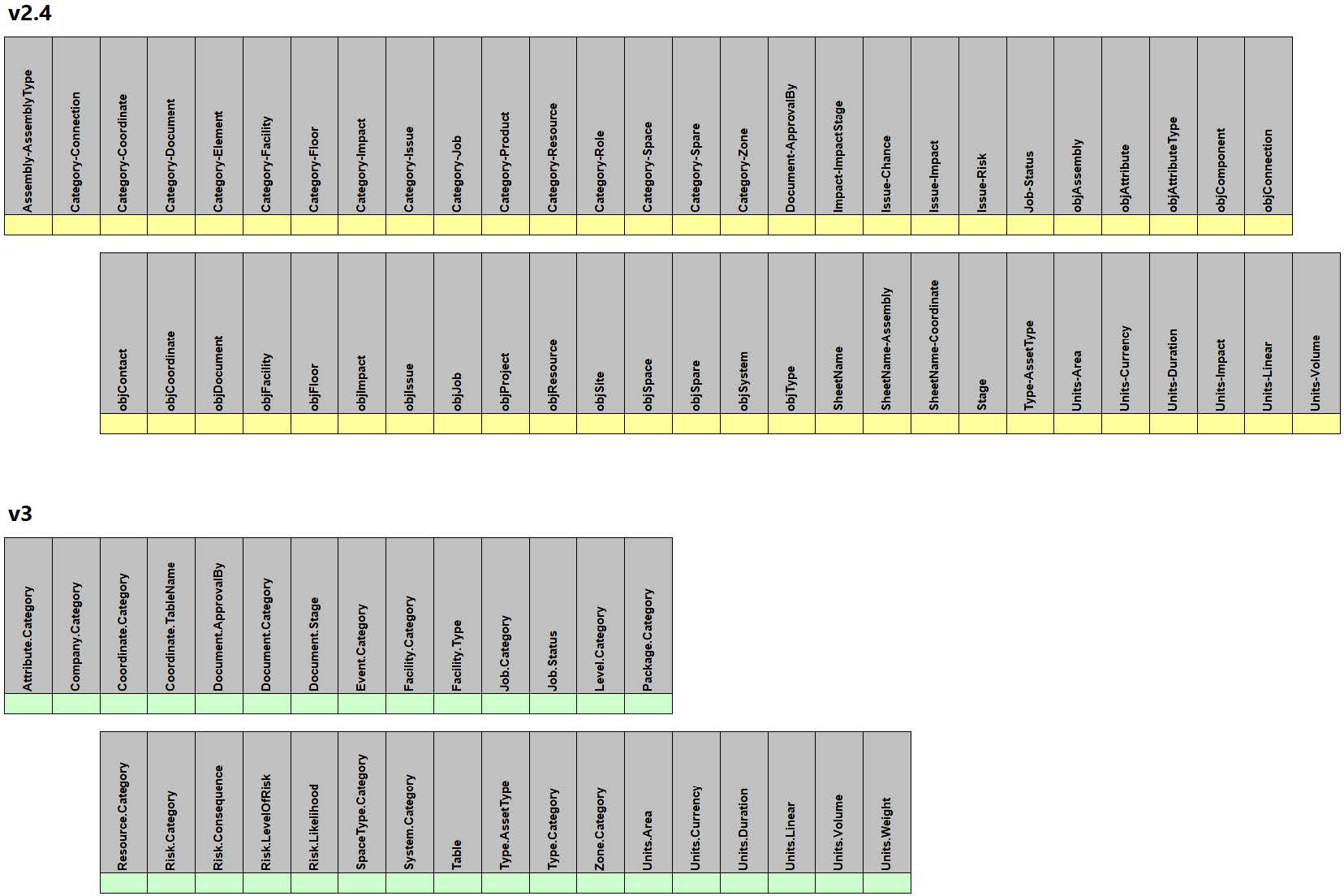The NBIMS-US™ v4 is a consensus-based national-level standard focused on defining standard approaches and guidelines to defining requirements, planning BIM adoption, and exchanging information between project team members. MORE
Many changes took place to align this data table with the changes to the other data tables, including adding, removing, and renaming of different data tables.
| ID | CHANGE | REASONING |
|---|---|---|
| 20.03 00.14 | New Data Field Names To align with the new naming convention, every data field has been renamed following the “Table.Field” format. For example:
| This makes it much easier to identify the PickList values for a particular data field on a particular data table. |
| 20.01 | OBJ Data Fields Removed All 20 data fields beginning with “obj” have been removed. | To simplify the deliverable, as these data fields were not often used. |
| 20.01 | Data Fields Removed Data fields associated with data tables that no longer exist in V3 have been removed. This includes:
| These data fields are no longer necessary. |
| 20.01 | Data Fields Optional The requirement for PickList data fields has changed from required (as color coded in yellow) to required if specified (as color coded in green). | To make it clearer that not all PickLists are required. |
| 24.01 25.01 26.01 07.01 | Data Fields Added Added data fields to accommodate newly added data tables, including:
| To support newly added data tables. |
The figure below shows the comparison between the data fields in V2.4 and those in V3 for this data table. The gray text along the top of V3 does not display in the data tables and is shown to better understand the new organization of the data fields.

FIGURE AD.17
The NBIMS-US™ v4 is a consensus-based national-level standard focused on defining standard approaches and guidelines to defining requirements, planning BIM adoption, and exchanging information between project team members. MORE
Established by the United States Congress, NIBS’ mission is to serve the public interest by advancing building science and technology to improve the built environment.
Subscribe to receive NIBS news and information.
Follow us:
